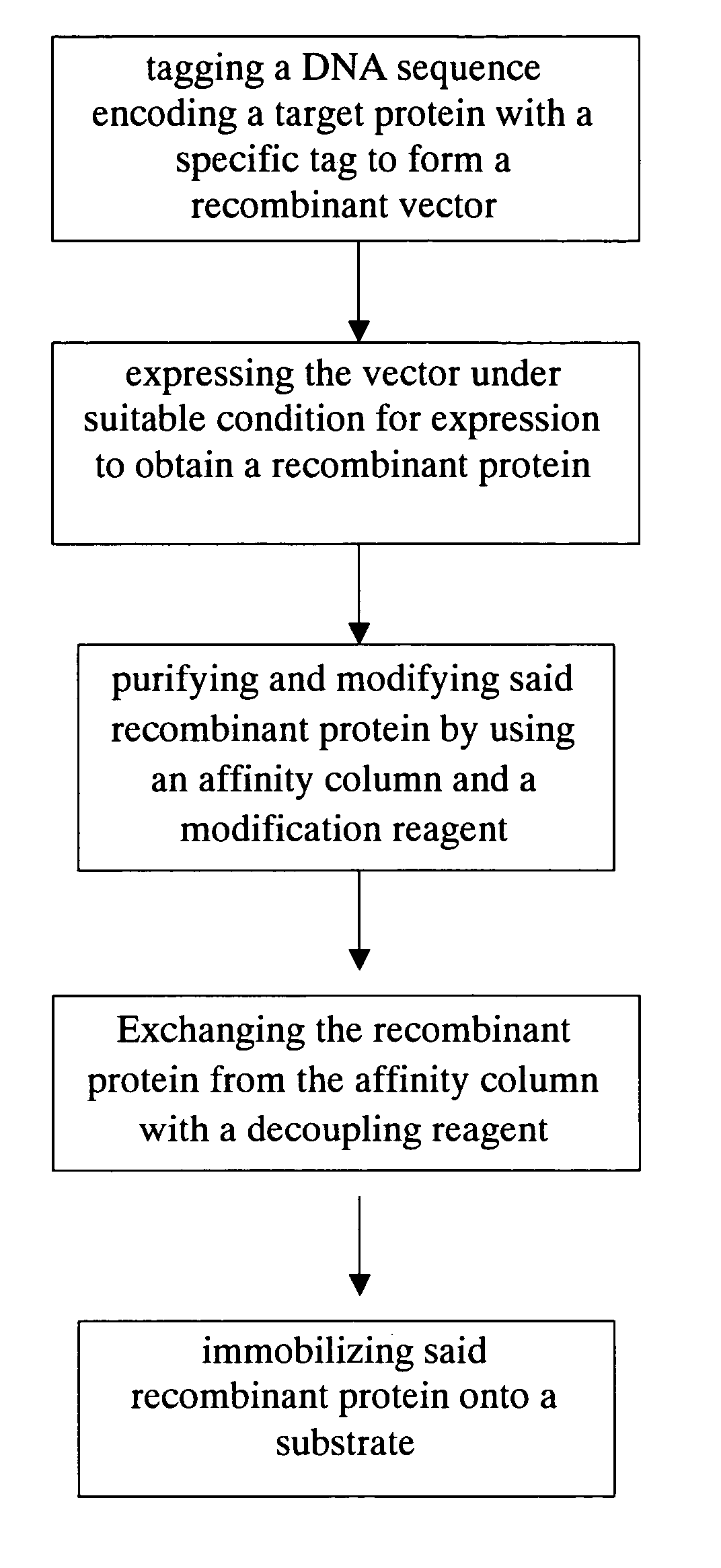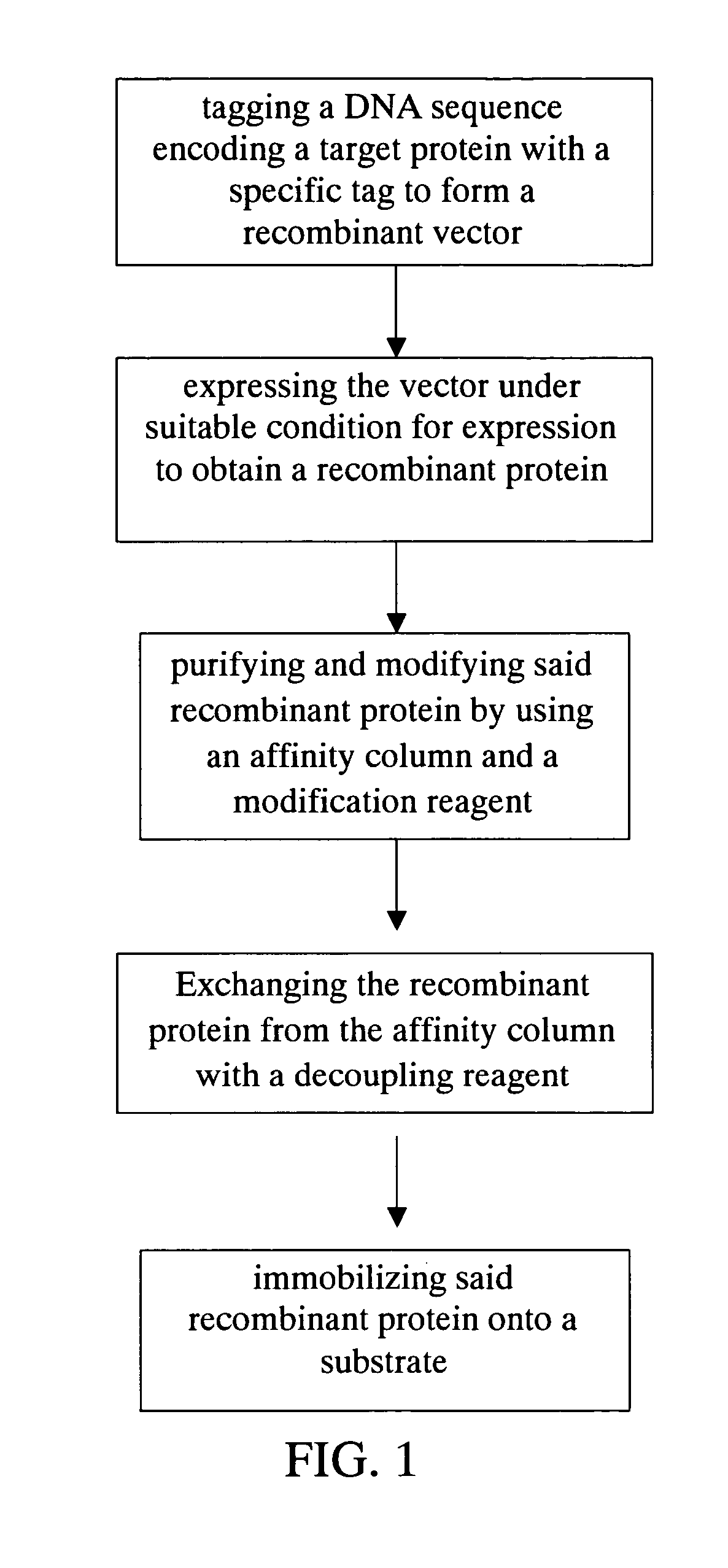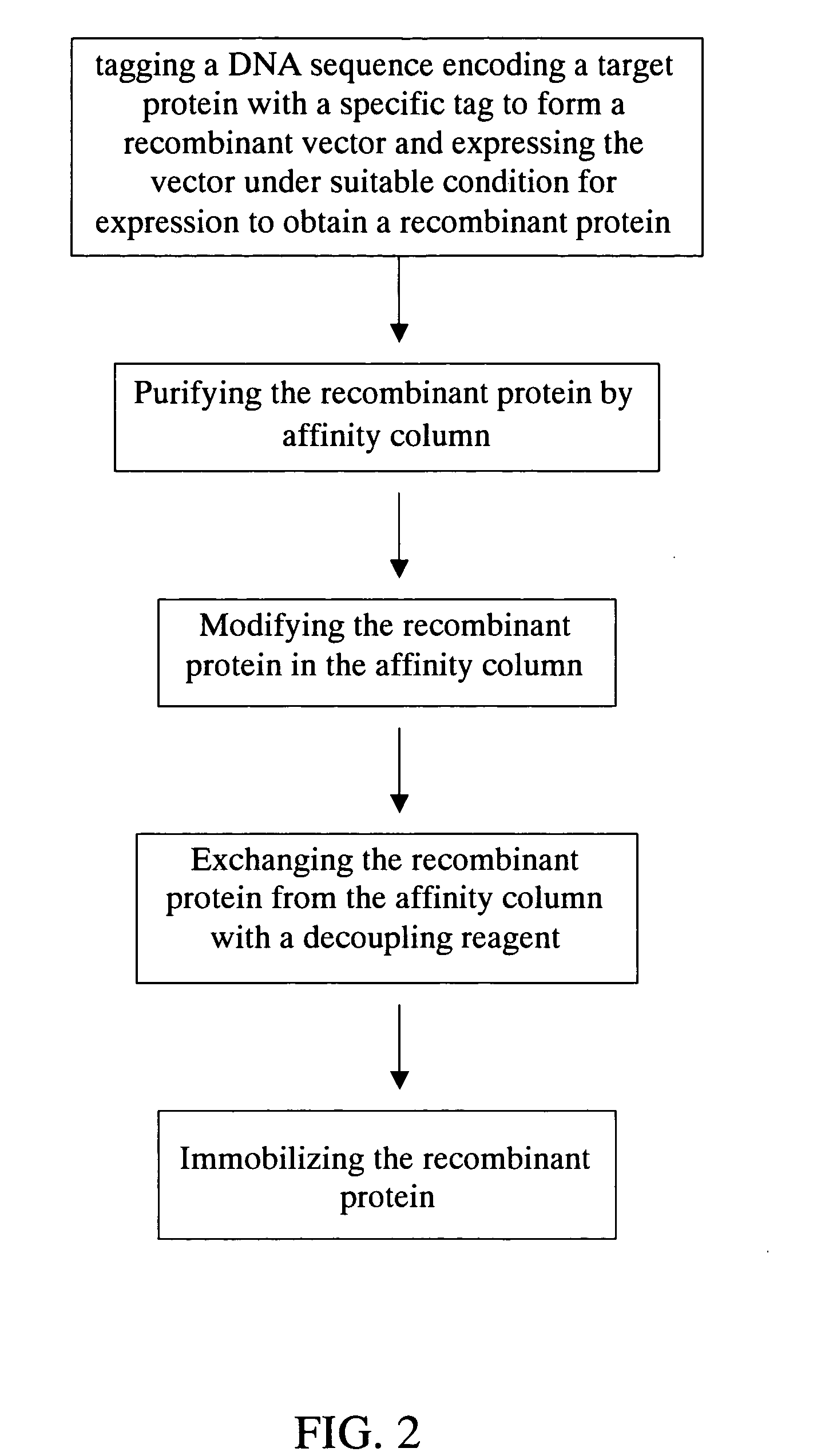Method for purification, modification and immobilization of recombinant protein
a technology of recombinant protein and immobilization method, which is applied in the field of purification, modification and immobilization of recombinant protein, can solve the problems of sample dilution and loss, poor differentiation, loss of protein function, etc., and achieve the effect of improving the limitation of single ligand
- Summary
- Abstract
- Description
- Claims
- Application Information
AI Technical Summary
Benefits of technology
Problems solved by technology
Method used
Image
Examples
example 1
The Purification, Biotinylation, and Immobolization of Recombinant Thrombospondin N-Terminal Like Domain of Human Collagen Type 21 Expressed in E. coli
[0038] Example 1 is a method for purifying, modifying and immobilizing recombinant protein of the present invention according to the flow chart shown in FIG. 2. E. coli BL21De3 was used as the expression host for the pET28A (Novagen) vector containing the recombinant gene. Incubating with LB media containing the inducer, IPTG (1 mM), E. coli expressed the designed recombinant thrombospondin N-terminal like domain (TSPN like domain) of human collagen type 21 containing a Histidine tag. As shown in FIG. 3, comparing with Lane 2 (without IPTG induction), Lane 1 (with IPTG induction) showed the recombinant TSPN like domain at where the arrow is pointing. Lane 3 and Lane 4 were the molecular weight markers. Lane 5 showed the primarily purified recombinant TSPN like domain. Its molecular weight is 25 kD, which conformed the expected total ...
example 2
The Purification, Biotinylation, and Immobolization of Recombinant Thrombospondin N-Terminal Like Domain of Human Collagen Type 21 Expressed in E. coli
[0039] As shown in FIG. 4, the procedure was identical with that of Example 1 (FIG. 2) except that the biotinylation of the recombinant TSPN like domain was carried out earlier in a solution. The results of the present Example is shown in FIG. 5. Lane 1 was the molecular weight marker. The primarily purified recombinant TSPN like domain (Lane 2) was biotinylated in a solution so to have biotin molecules. The molecular weight of the recombinant protein therefore increased slightly (Lane 3). The biotinylated recombinant TSPN like domain was then passed through a Ni-IDA affinity chromatography column. The recombinant TSPN like domain was selectively retained in the column through its Histidine tag. The solution passing out the column contained very low amount of the recombinant TSPN like domain (Lane 4). The column was then washed with ...
PUM
| Property | Measurement | Unit |
|---|---|---|
| affinity | aaaaa | aaaaa |
| isoelectric point | aaaaa | aaaaa |
| molecular weight | aaaaa | aaaaa |
Abstract
Description
Claims
Application Information
 Login to View More
Login to View More - R&D
- Intellectual Property
- Life Sciences
- Materials
- Tech Scout
- Unparalleled Data Quality
- Higher Quality Content
- 60% Fewer Hallucinations
Browse by: Latest US Patents, China's latest patents, Technical Efficacy Thesaurus, Application Domain, Technology Topic, Popular Technical Reports.
© 2025 PatSnap. All rights reserved.Legal|Privacy policy|Modern Slavery Act Transparency Statement|Sitemap|About US| Contact US: help@patsnap.com



